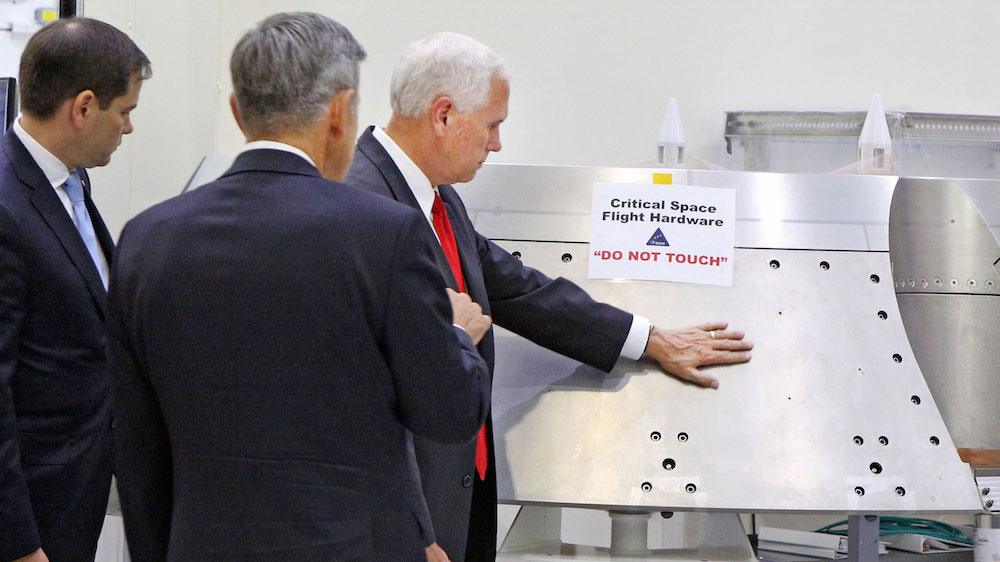Why NASA Says It's OK That VP Mike Pence Touched Orion Cover

It's A-OK that Vice President Mike Pence touched a piece of titanium equipment destined for outer space, despite a sign on it that stated, "Critical Space Flight Hardware, Do Not Touch," NASA said today (July 7).
Pence reached out and touched the equipment — the forward bay cover for the Orion spacecraft — while on a tour of the Kennedy Space Center in Florida yesterday. A photographer captured the moment, and the photo quickly became an internet meme.
Despite the warning sign, NASA said the equipment's surface was "absolutely okay" to touch. [Orion's First Test Flight: Full Coverage]
"The signs are there as a day-to-day reminder," NASA spokesperson Jen Rae Wang said in a statement emailed to Live Science. "Procedures require the hardware to be cleaned before tiles are bonded to the spacecraft, so touching the surface is absolutely okay."
If the equipment truly needed to be kept clean, "the hardware would have had a protective cover over it like the thermal heat shield, which was nearby," Wang said.
It's unclear whether Pence realized that he could touch the Orion cover, or he simply didn't see the sign. However, the vice president apologized on NASA on Twitter July 7, and joked that Florida Senator Marco Rubio, who was also on the tour, dared him to touch the equipment.
The Orion spacecraft — named after Orion's belt, part of one of the largest constellations in the night sky — is designed to eventually take astronauts to the moon and deep space destinations like Mars. NASA began developing the capsule in 2005, and the spacecraft made it into space during an uncrewed mission in 2014, when the capsule went on a 4-hour orbital ride known as Exploration Flight Test-1, according to Space.com, a sister site of Live Science.
Breaking space news, the latest updates on rocket launches, skywatching events and more!
Now, NASA is preparing Orion for Exploration Mission-1 (EM-1), another uncrewed mission. EM-1, which is slated to launch in 2019, will propel Orion on a path more than 40,000 miles (64,000 kilometers) beyond the moon, according to Space.com.
Keeping the Orion spacecraft clean before liftoff is key, NASA said.
"Even a slight contaminant can create problems inside a capsule," NASA said on its website. "It may not sound like a big deal for something that will be exposed to space, but an Earthly bit of pollen or sand or even a human hair can confuse a star tracker, lead to a buildup around an exhaust port or block a thruster, for example."
If EM-1 is successful, Orion is expected to take a crew of four astronauts into space after a period of at least 33 months, Space.com reported.
Editor's note: This story was updated to include that Orion is part of one of the largest constellations in the night sky, and that Vice President Mike Pence apologized to NASA.
Original article on Live Science.
Join our Space Forums to keep talking space on the latest missions, night sky and more! And if you have a news tip, correction or comment, let us know at: community@space.com.

Laura is an editor at Live Science. She edits Life's Little Mysteries and reports on general science, including archaeology and animals. Her work has appeared in The New York Times, Scholastic, Popular Science and Spectrum, a site on autism research. She has won multiple awards from the Society of Professional Journalists and the Washington Newspaper Publishers Association for her reporting at a weekly newspaper near Seattle. Laura holds a bachelor's degree in English literature and psychology from Washington University in St. Louis and an advanced certificate in science writing from NYU.

